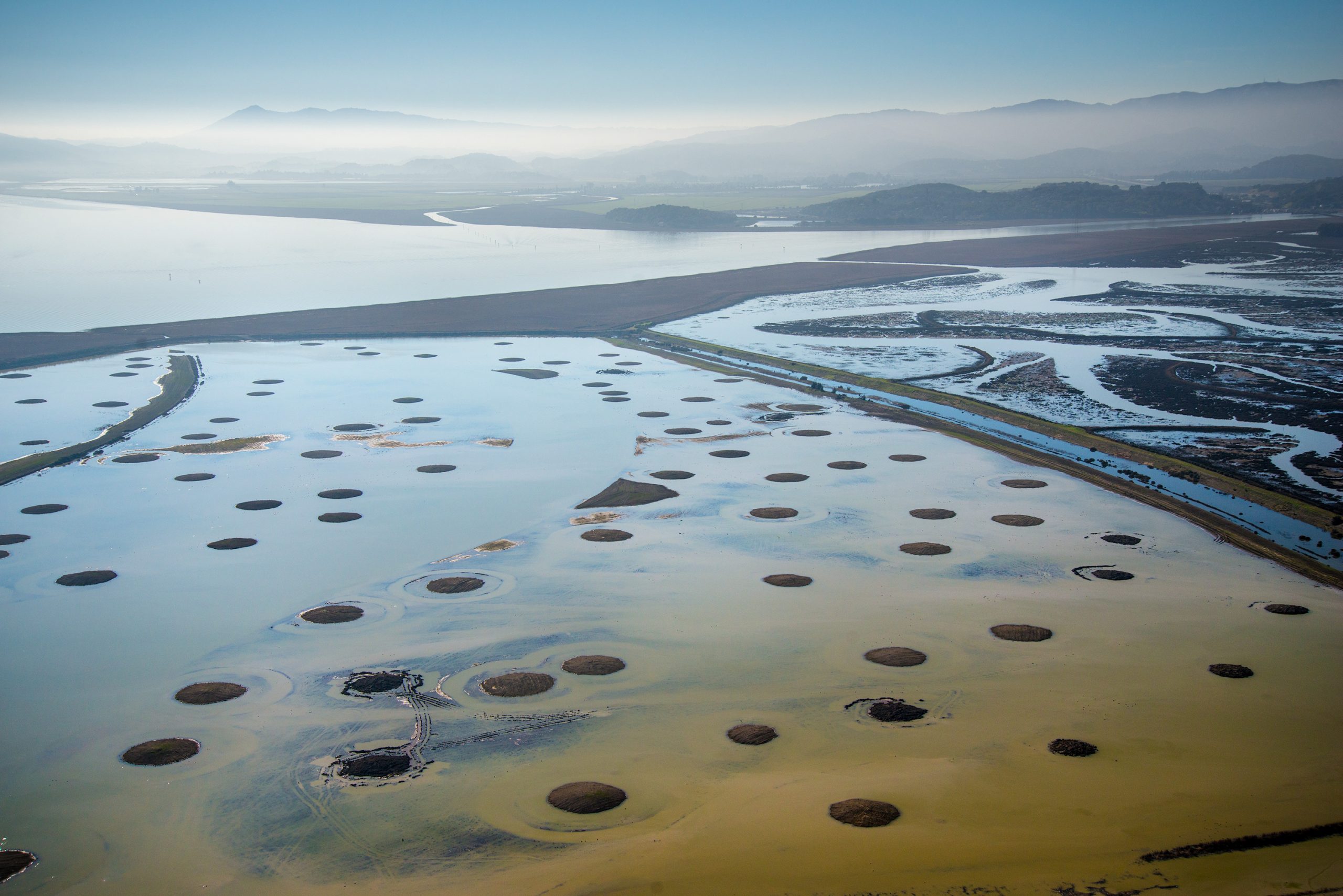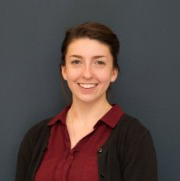
Sears Point is the site of a Natural and Nature-Based Features wetland restoration project by the U.S. Army Corps of Engineers in San Pablo Bay, Sonoma County, Calif. Photo by U.S. Army Corps of Engineers.
By Amy Sechrist
The Coastal Resilience Center (CRC), in partnership with the Department of City and Regional Planning at the University of North Carolina at Chapel Hill (DCRP) welcomed Dr. Julie Rosati on Thursday, Feb. 6, as part of its ongoing Natural Hazards Resilience Speaker Series. Dr. Rosati is the Technical Director in the Coastal and Hydraulics Laboratory for the U.S. Army Corps of Engineers (USACE) in Vicksburg, Miss. Her talk focused on both the history of the Corps and the ways in which they are using field research to address the four main goals of the program.
Originally, Dr. Rosati said, the USACE Civil Works were charged with three primary missions: navigation, flood and coastal storm risk management, and environmental stewardship. In addition to their national work, Civil Works also provides technical and construction support to more than 100 countries internationally.
While the majority of research and money is funneled towards military research, the Civil Works side of the Corps still plays an integral role in the functioning of our national economy. Indeed, the commercial waterways that Civil Works work to dredge and maintain convey 98% of U.S. imports and exports. Without the Civil Works arm of the Corps of Engineers, Dr. Rosati said, our economy as we know it would cease to exist.
Organized into Divisions and Districts by watershed, USACE often must grapple with the ways in which their various missions intersect and conflict with their other goals. For example, dredging a port may be incredibly important for addressing their Navigation Mission; however, this might conflict with their mission on environmental stewardship. Rosati explained that navigating these conflicts is a natural part of the job of such a large and diverse organization.
Of course, working for the USACE and dealing with the numerous challenges facing our water resources is not easy, she said. Aging infrastructure, globalization, increased demand for water, declining biodiversity and disaster preparedness are only some of the challenges Dr. Rosati and her team are trying to address. But through the work of the U.S. Army Engineer Research and Development Center (ERDC), which includes the CHL, some novel solutions are beginning to arise.
Take for example their use Automatic Identification System Data, which allows ERDC researchers to evaluate the ways and frequency with which vessel pass through U.S. ports. This helps not just for fact-finding when things go wrong in the case of a crash, but also allow for in-depth analysis of port activity before, during and after severe weather events such as Hurricane Matthew.

The dredge “New York” performs dredging for the U.S. Army Corps of Engineers in the Port Jersey Channel, New Jersey. Photo by U.S. Army Corps of Engineers.
Another project looks at way to repurpose dredged material as a way of maintaining coastal beaches. By dumping this mix of sand, silt and clay just offshore, the researchers at ERDC found that the tides effectively sorted the material – sand is emoved from the silt, leaving the beaches sandy and enjoyable for beach-goers. This repurposing of dredged material helps to keep the sediment in the same system from which is was pulled, Dr. Rosati said – a very important factor when considering water and soil systems holistically.
What about harmful algal blooms? ERDC is working on those as well. They’re developing new ways to treat toxic algae blooms including methods not just for removing the algae but also treating the toxins created by the algae. From dredging to algae, the USACE and ERDC are hard at work trying not just to deliver on their individual missions but to uphold all three simultaneously despite conflicting goals, she said.
Dr. Rosati ended her discussion with a call for students to get involved, pointing out that there are several internships and fellowship programs for which students might be qualified. With student scholarships and grants also available, students with interests in a wide variety of water infrastructure and environmental issues should consider following in Dr. Rosati’s impressive footsteps.
Amy Sechrist is a first-year master’s candidate in the Department of City and Regional Planning with a concentration in Housing and Community Development. Her research interests include affordable housing, planning for equity, and the intersection of gender and planning. Prior to UNC, she worked as a Housing Advocate and Shelter Manager at a gender-based violence crisis center and as a federal project management consultant. Amy holds a certificate in Creative Placemaking from the New Hampshire Institute of Art and a bachelor’s degree in Political Communication from George Washington University.

